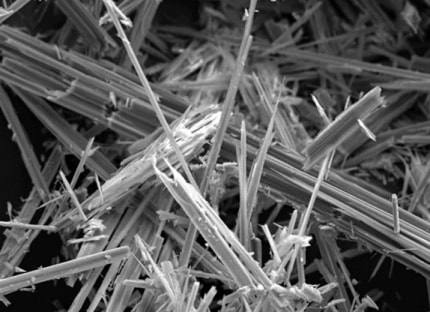Research into Asbestos Latency Period for Mesothelioma
By Warren Miller. 19th July 2017
Mesothelioma has one of the longest latency periods of any cancer. It typically takes anywhere from 20 to 50 years after a person’s initial exposure to asbestos before the symptoms of Mesothelioma arise.
A study in Germany recently has investigated the latency period associated with asbestos diseases including mesothelioma.
The scientists researched the presence of asbestos fibres in lung tissue over a long period of time. They found that regardless of the type of asbestos involved, the volume of asbestos fibres in tissue does not decrease over time

The most common of the six types of asbestos, chrysotile remained stable over time, despite earlier research which
suggested that it may be easier for the body to rid itself of chrysotile.
Each of the six types of asbestos has different chemical and physical characteristics. Each is carcinogenic - it can cause cells in the body to become cancerous by altering their genetic structure so that they multiply continuously and become malignant.
The Chrysotile which accounts for 90 percent of asbestos used commercially in the world, has fibres that are more flexible than other asbestos types. Whereas tremolite, crocidolite and amosite are amphiboles, that have sharper, longer and straighter fibres.
When asbestos fibres are inhaled, they can become trapped in the lungs, the pleura and the Mesothelium, the protective membrane that forms the lining of several body cavities: the pleura (thoracic cavity), peritoneum (abdominal cavity including the mesentery), mediastinum and pericardium (heart). Over the years, the asbestos fibres can cause inflammation and scarring, which can then lead to other conditions including lung cancer and mesothelioma.
Scientific research based on the following criteria
- At least two biopsies at minimal intervals of four years
- Results of asbestos concentration had to be available
- Earlier asbestos fibre burden from surgery had to be available
- Biopsies must show at least 500 fibres of asbestos per gram of lung tissue
In the study, the time between biopsies varied from four to 21 years. Some biopsies were done as part of an autopsy, others during diagnosis or surgery. The analysis revealed high concentrations of chrysotile asbestos in 66.7 percent of tissue samples, with the rest containing mainly amphibole fibres.
The longest time since a patient was last exposured to asbestos was 37 years, falling in line with the average latency period of mesothelioma. Concentrations remained stable over the investigation period, suggesting the type of asbestos has no significant effect on the body’s ability to rid itself of the toxic fibres.
Analysis of the results
One of the researchers said that:
“ Our results show that asbestos continues to be demonstrable in human lungs, that also chrysotile can be identified after many years, and that there is no significant reduction of asbestos fibre concentrations in lung tissues over time after exposure cessation. The unique benefit of the data presented here is to have a measured starting point of the asbestos fibre burden of the human lung tissue to compare later findings with. ”
There is still a lot to learn about how and when these biological changes occur. Most mesothelioma patients don’t experience symptoms until several decades after the initial contact with asbestos fibres. Most will have long retired from high-risk occupations such as pipe fitting and ship building. The German study gives a new insight into the ability of asbestos to remain in the body over time.
The German scientists believe previous data showing a reduction of chrysotile fibres in human lung tissue must have
occurred not long after the accumulation of fibres:
“ It is clear that there has been no relevant change in the ratio of amphibole to chrysotile fibres and that the chrysotile concentration has remained stable over the investigation period of 4–21 years.”
As the first study to test asbestos concentrations in humans over time, the German research proves chrysotile can be just as toxic as other forms of asbestos and should be treated with the same level of concern.
“ Our unique data experimentally confirmed the well-known characteristics of the asbestos fibres for individual human lungs in vivo over many years. Overall, this study very clearly demonstrates high biopersistence of not only amphibole but also chrysotile asbestos in the human lung and thus gives mechanistic explanations for the toxicity of the fibre and the long latency period of asbestos related diseases. ”

Author
Warren Miller MSc. BSc
Claims manager and website author
Warren has been assisting victims of Mesothelioma and asbestos cancer for more than 18 years. He is also the senior technical author of this website, responsible for sourcing legal and medical material beneficial to those who may been recently diagnosed with an asbestos disease.. Read more >













